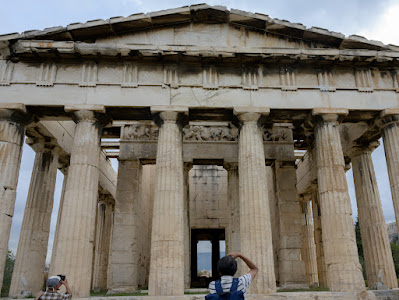Ten days on Zuza to St Kilda - 10th June - A cruise around Borerey and we arrive in Village Bay
St Kilda holds World Heritage Site status twice. Once for its cultural value and once again for its natural environment. It contains the largest colony of seabirds in Northern Europe and its marine environment is heavily protected. When we arrived in St Kilda Neil first took Zuza around the coast of Borerey, a large island with prominent sea stacks. Borerey has a summit of 384 metres and so the cliffs are very steep and there is no place for a boat to tie up. It is 4 miles north west of Hirta, the main island, and no people have lived on it in recent times.
Zuza has a very shallow draft (1.95m) as she has a bilge keel and so is ideal for getting close in to shore.
By Eric Gaba (Sting - fr:Sting) - Own workMap drawn using Landsat ETM+ imagery (public domain), CC BY-SA 4.0, https://commons.wikimedia.org/w/index.php?curid=18273982
The weather was dull and overcast with a weak sun struggling to get through. We motored past Creagan na Rubhaig Bana and along the north-east side of Borerey. The high rugged cliffs were covered in gannets. Since the advent of bird flu, which thankfully seems to be losing its hold on St Kilda, the northern gannet colony here may now be larger than that on Bass Rock which was the largest in the world.
When St Kilda was inhabited one of the main sources of food was seabirds and eggs. Men scaled these cliffs after being dropped off at the base and would climb through the bird colonies collecting eggs and young birds. They would remain on Borerey and its stacs for days at a time before being picked up again. Borerey was also used to graze sheep and we saw some of the Borerey sheep (a prehistoric breed) grazing on the near vertical slopes of the island. They were spooked by the boat and started running away.
Soon we were passing Stac an Armin (196 metres high) with its colonies of birds. Egg and bird collection also took place here and there are small stone shelters on the stack built by the collectors. In 1727 a group of 3 men and 8 boys were dropped off at Stac an Armin. Unfortunately, unbeknown to them, the main island suffered an outbreak of small pox. The 4 surviving men on Hirta were not strong enough to row to Borerey to pick up the egg collectors and they were left there to fend for themselves from August to the following May! Here is Stac an Armin viewed from different angles.
We passed through the channel separating Stac an Armin and the main island and started down the eastern side of Boreray. We could see Stac Lee in front of us with its very distinctive shape and strange crisscrossing of rock strata. At 172 metres high it is a very substantial piece of rock.
As we went past we could see the side of Stac Lee which was precipitous. The surrounding air was thick with birds.
We finished our circumnavigation of this dramatic landscape and Neil made for the main island of Hirta, although wistfully looking back I could see the cliffs and stacs receding.
And then remarkably, 2 minkie whales started following Zuza and one even swum under the boat. It was quite sensational. But again all I got on my camera was a disappearing fin!
Finally we motored into Village Bay on Hirta and anchored up just in time for dinner. It had been one hell of a day!
Hirta with the island of Dun on the left-hand side and the island of Soay on the right.
Passing Dun
Village Bay




































Comments
Post a Comment